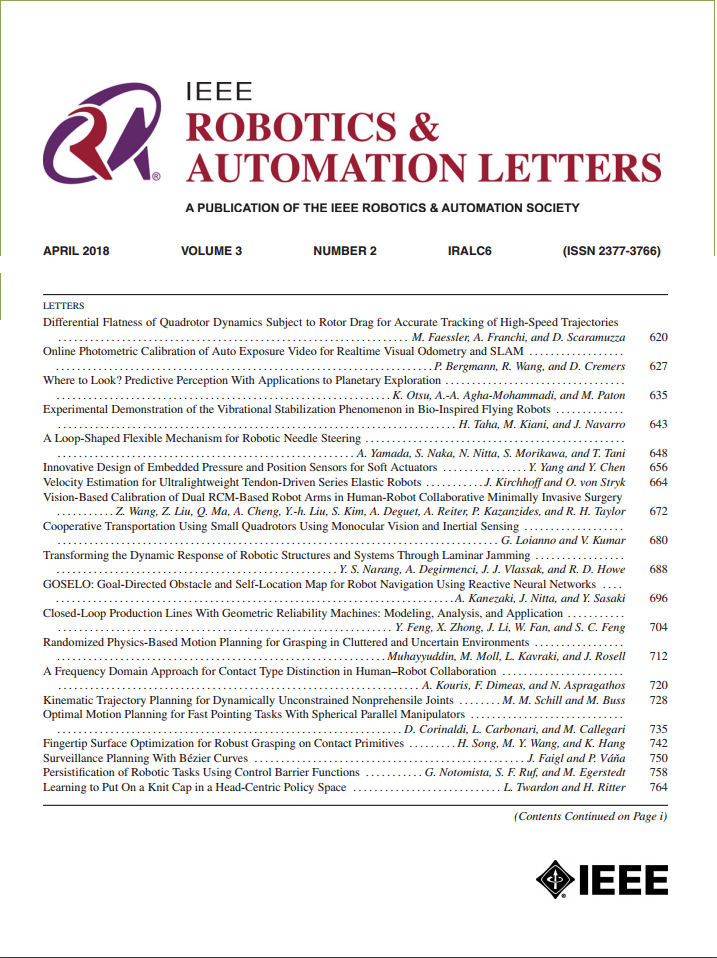Enhancing Indoor Occupancy Prediction via Sparse Query-Based Multi-Level Consistent Knowledge Distillation
IF 5.3
2区 计算机科学
Q2 ROBOTICS
引用次数: 0
Abstract
Occupancy prediction provides critical geometric and semantic understanding for robotics but faces efficiency-accuracy trade-offs. Current dense methods suffer computational waste on empty voxels, while sparse query-based approaches lack robustness in diverse and complex indoor scenes. In this letter, we propose DiScene, a novel sparse query-based framework that leverages multi-level distillation to achieve efficient and robust occupancy prediction. In particular, our method incorporates two key innovations: (1) a Multi-level Consistent Knowledge Distillation strategy, which transfers hierarchical representations from large teacher models to lightweight students through coordinated alignment across four levels, including encoder-level feature alignment, query-level feature matching, prior-level spatial guidance, and anchor-level high-confidence knowledge transfer and (2) a Teacher-Guided Initialization policy, employing optimized parameter warm-up to accelerate model convergence. Validated on the Occ-Scannet benchmark, DiScene achieves 23.2 FPS without depth priors while outperforming our baseline method, OPUS, by 36.1% and even better than the depth-enhanced version, OPUS基于稀疏查询的多层次一致性知识精馏增强室内占用率预测
占位预测为机器人提供了关键的几何和语义理解,但面临效率和准确性的权衡。当前的密集方法在空体素上存在计算浪费,而基于稀疏查询的方法在复杂多样的室内场景中缺乏鲁棒性。在这封信中,我们提出了DiScene,一个新的基于稀疏查询的框架,利用多级蒸馏来实现高效和鲁棒的占用预测。特别是,我们的方法包含两个关键的创新:(1)采用多层一致性知识精馏法,通过编者级特征对齐、查询级特征匹配、先验级空间引导和锚定级高置信度知识转移等四个层次的协调对齐,将大型教师模型的分层表示传递给轻量级学生;(2)采用优化参数预热的教师引导初始化策略,加速模型收敛。在Occ-Scannet基准测试上验证,DiScene在没有深度先验的情况下达到23.2 FPS,同时比我们的基准方法OPUS高出36.1%,甚至比深度增强版本OPUS$\dagger$更好。通过深度集成,DiScene$\dagger$实现了新的SOTA性能,超越了EmbodiedOcc 3.7%,推理速度提高了1.62倍。此外,Occ3D-nuScenes基准和野外场景的实验证明了我们的方法在各种环境中的多功能性。
本文章由计算机程序翻译,如有差异,请以英文原文为准。
求助全文
约1分钟内获得全文
求助全文
来源期刊

IEEE Robotics and Automation Letters
Computer Science-Computer Science Applications
CiteScore
9.60
自引率
15.40%
发文量
1428
期刊介绍:
The scope of this journal is to publish peer-reviewed articles that provide a timely and concise account of innovative research ideas and application results, reporting significant theoretical findings and application case studies in areas of robotics and automation.
 求助内容:
求助内容: 应助结果提醒方式:
应助结果提醒方式:


